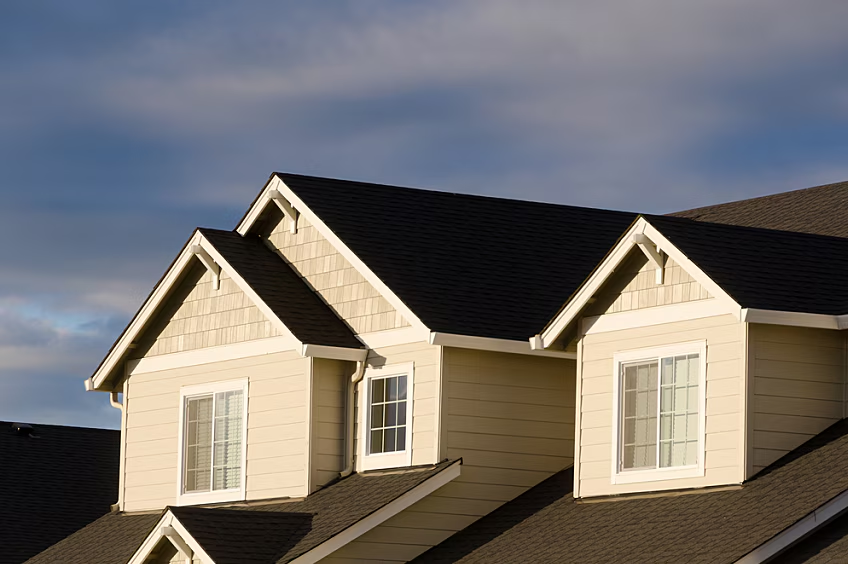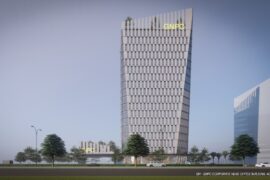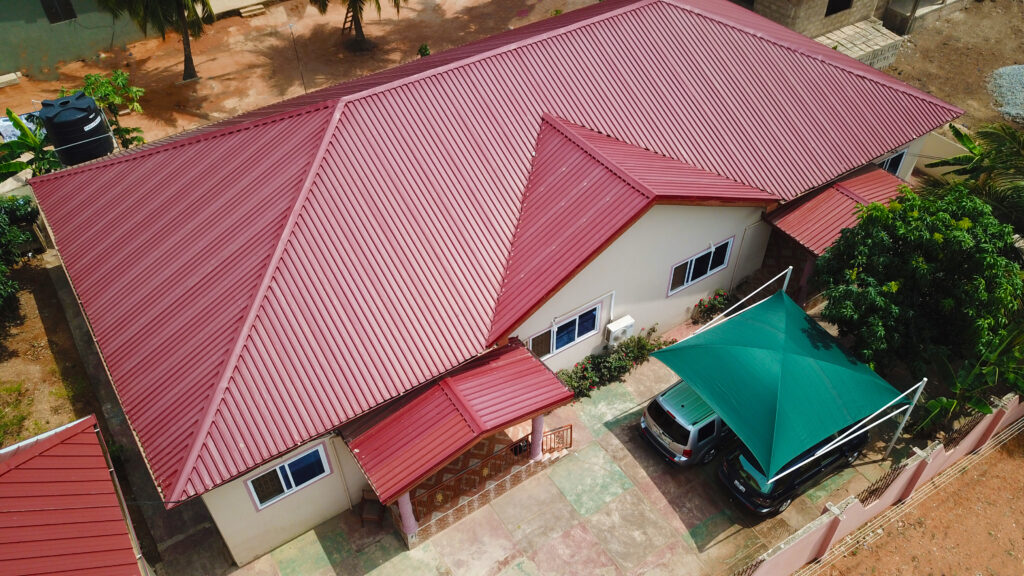Coincidentally, as you embark on your building project, you may find yourself pondering the question: what is a gable roof and is it the right choice for you? Well, let’s explore together. A gable roof is a classic and popular roofing style characterized by its triangular shape and two sloping sides that meet at a peak. It offers several advantages, such as increased attic space, better ventilation, and simplified construction. However, like any design choice, it also has its drawbacks. So, before making a decision, it’s crucial to consider various factors that will impact your project. Curious to know more? Stay tuned to discover whether a gable roof is the perfect fit for your building endeavor.
Definition of a Gable Roof
A gable roof, also known as a pitched or peaked roof, is a common roofing style characterized by its triangular shape. It consists of two sloping sides that meet at a ridge, forming a gable at each end. The gable is the triangular portion that extends vertically from the eaves to the ridge. Gable roofs are popular due to their simplicity and classic design.
One of the main advantages of a gable roof is its excellent water shedding capabilities. The steep slope allows rainwater and snow to easily run off, preventing water accumulation and potential leaks. Additionally, the triangular shape provides ample attic space, allowing for better ventilation and insulation.
However, gable roofs also have some drawbacks. Their steep slope can make them more susceptible to wind damage, especially during storms or hurricanes. Without proper reinforcement, the gable ends can be prone to collapse or uplift. Furthermore, this type od roof may not be suitable for regions with high winds or hurricanes, as they can create uplift forces that put additional stress on the structure.
Characteristics of a Gable Roof
The characteristics of a gable roof include its triangular shape formed by two sloping sides meeting at a ridge. This type of roof design is one of the most common and popular roof types used in residential and commercial buildings. They are known for their simplicity and efficiency in shedding water and snow, making them suitable for areas with heavy rainfall or snowfall.
One of the main advantages of a gable roof is its excellent ventilation. The steep slopes of the roof allow hot air to rise and escape through the ridge, while cool air enters through the eaves, creating a natural air circulation that helps regulate indoor temperature and improve energy efficiency.
Another characteristic of a gable roof is its versatility in accommodating different building styles and designs. Whether you have a traditional, modern, or contemporary architectural style, this roof type can be customized to complement the overall aesthetic of your building.
Moreover, gable roofs are relatively easy to construct and maintain compared to other roof types. The simple design and minimal components make installation and repairs straightforward, saving you time and money in the long run.
Advantages of a Gable Roof
With its excellent ventilation and versatility in design, a gable roof offers numerous advantages for your building project. One of the key advantages is its cost effectiveness. Gable roofs are relatively easy and less expensive to construct compared to other types of roofs. Their simple design, consisting of two sloping sides meeting at a ridge, requires fewer materials and less labor, reducing overall construction costs.
In addition to being cost effective, gable roofs also provide benefits in terms of architectural design. The triangular shape and steep slopes of a gable roof allow for efficient water drainage, minimizing the risk of leaks and water damage. The steep slopes also make it easier to remove snow or debris that may accumulate on the roof, reducing the risk of structural damage.
Furthermore, the design versatility of gable roofs allows for the incorporation of various architectural features such as dormers, gables, and skylights, enhancing the aesthetic appeal of the building. These design options provide opportunities for customization and can add character and charm to your building project.
Ultimate Guide to Roofing in Ghana: Planning, Types, Cost Benefits and Lifespan
Disadvantages of a Gable Roof
Despite its advantages, they have certain limitations that should be considered for your building project. While gable roofs are popular for their simplicity and cost-effectiveness, they do come with potential problems.
One limitation of a gable roof is its vulnerability to strong winds. The triangular shape of the roof creates a large surface area that can catch wind, causing uplift and potential damage. In areas prone to hurricanes or strong storms, this type of roof design may not be the best choice.
Another limitation is the lack of attic space. The steep slopes of this roof type reduce the usable space under the roof. This can be a disadvantage if you are looking to maximize storage or living space in your building.
Additionally, gable roofs may not be suitable for buildings with complex designs or unconventional shapes. The simplicity of this type of roof works best for rectangular or square structures. If your building has unique architectural features or irregular shapes, a gable roof may not be the most aesthetically pleasing option.
Factors to Consider for Your Building Project
Consider several important factors when planning your building project. These factors will help you make informed decisions and ensure the success of your project. Here are two key factors to consider:
1. Cost Considerations:
Budget: Determine your budget for the project and allocate funds accordingly. Consider the cost of materials, labor, permits, and any additional expenses that may arise.
Long-term Costs: Evaluate the long-term costs associated with your building project. This includes maintenance, energy efficiency, and potential repairs. Choosing sustainable and durable materials can help minimize these costs over time.
2. Environmental Impact:
Energy Efficiency: Consider incorporating energy-efficient features into your building design. This can include insulation, efficient windows, and renewable energy options. These measures not only reduce environmental impact but can also lower energy consumption and costs.
Sustainable Materials: Opt for environmentally friendly and sustainable building materials. This includes using recycled or locally sourced materials, as well as products with low carbon emissions. By considering the environmental impact of your project, you contribute to a more sustainable future.
Conclusion: Is a Gable Roof Right for You?
A gable roof may be a suitable choice for your building project. Before making a decision, it is important to consider the pros and cons of this type of roof design, as well as other factors that come into play when choosing a roof design.
One of the main advantages of a gable roof is its simplicity. The triangular shape allows for efficient water drainage, making it ideal for areas with heavy rainfall or snowfall. They also provide ample attic space, allowing for better ventilation and potential storage options. Additionally, the steep slope of a gable roof allows for easier maintenance and reduces the likelihood of debris buildup.
However, there are also some drawbacks to consider. They can be more susceptible to wind damage, especially if not properly constructed or reinforced. The large surface area of the roof can also result in increased heat gain during hot summer months. Furthermore, gable roofs may not be the best choice for areas prone to hurricanes or tornadoes, as the triangular shape can create lift and increase the risk of damage.
Ultimately, the decision to choose a gable roof for your building project depends on various factors such as climate, budget, and personal preferences. It is important to weigh the pros and cons and consult with professionals to make an informed decision that suits your specific needs.
Types of Roofs To Consider For Your Building Projects
Frequently Asked Questions
What Is the Average Cost of Installing a Gable Roof?
The average cost of installing this type of roof design depends on various factors such as the size of your building and the materials used. The installation process involves framing the roof with triangular gable ends and adding roofing materials. Costs can range from $8,000 to $20,000, including labor and materials. It’s important to consult with roofing contractors to get accurate estimates tailored to your specific project.
Can a Gable Roof Be Easily Modified or Extended in the Future?
Yes, a gable roof can be easily modified or extended in the future. With its simple triangular shape, adding onto a gable roof is straightforward. You can easily extend the roofline to accommodate extra living space or a new addition. The design allows for flexibility and future modifications, making it a practical choice for your building project.
Are Gable Roofs Suitable for Areas With High Wind or Hurricane-Prone Regions?
In high wind or hurricane-prone regions, gable roofs may not be the most suitable choice. While gable roofs are commonly used and offer some benefits such as energy efficiency, they are more vulnerable to wind uplift compared to other roof types. To address this, reinforcement measures should be taken, such as installing additional bracing or using hurricane straps. It is important to consult with a structural engineer or local building codes to ensure the roof can withstand the specific wind requirements in your area.
What Are Some Common Alternatives to Gable Roofs?
When considering alternatives to gable roofs, two common options are dormer windows and hip roofs. Dormer windows provide additional space and natural light by extending vertically from the roof. Hip roofs, on the other hand, have slopes on all four sides, making them more resistant to high winds compared to gable roofs. Both alternatives offer their own benefits and can be suitable for different building projects depending on factors such as architectural style and climate conditions.
How Long Does a Gable Roof Typically Last Before It Needs to Be Replaced or Repaired?
Typically, a gable roof can last anywhere from 20 to 30 years before it needs to be replaced or repaired. To maximize its lifespan, regular maintenance is key. This includes cleaning the gutters, inspecting for any damage or leaks, and ensuring proper ventilation. They have their advantages, such as providing excellent attic space and enhanced ventilation, but they also come with some disadvantages, such as being susceptible to wind damage.
Conclusion
In conclusion, a gable roof is a popular choice for many building projects due to its simplicity and cost-effectiveness. It offers several advantages such as good ventilation, increased attic space, and easy maintenance. However, it also has some disadvantages, such as being less resistant to strong winds. When considering this type of roof design for your building project, factors like climate, budget, and personal preference should be taken into account to determine if it is the right choice for you.
Discover more from Ghana Scoop
Subscribe to get the latest posts sent to your email.





